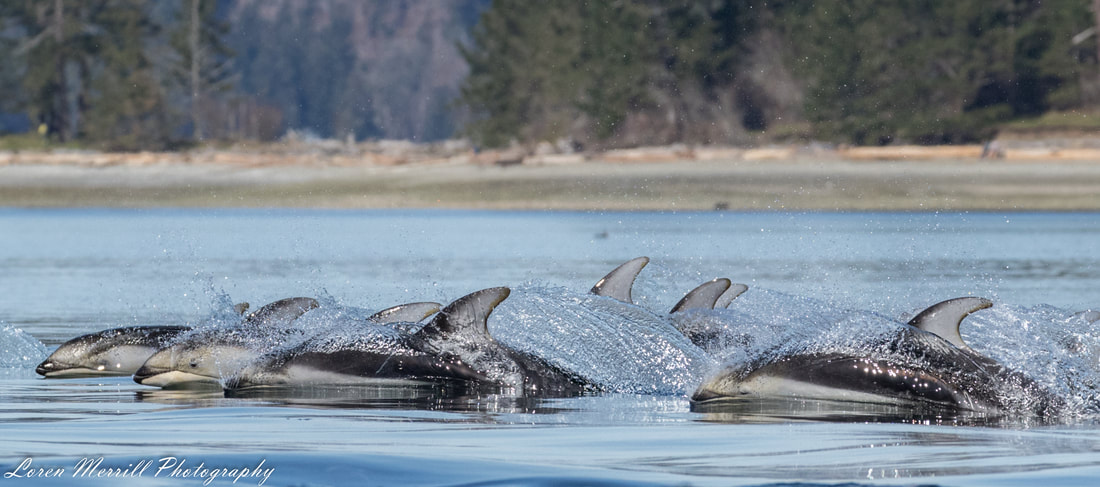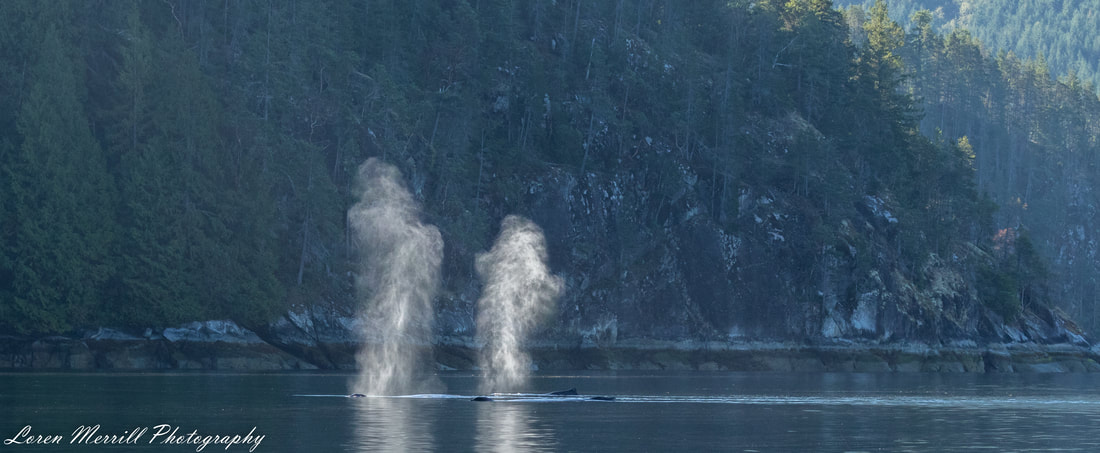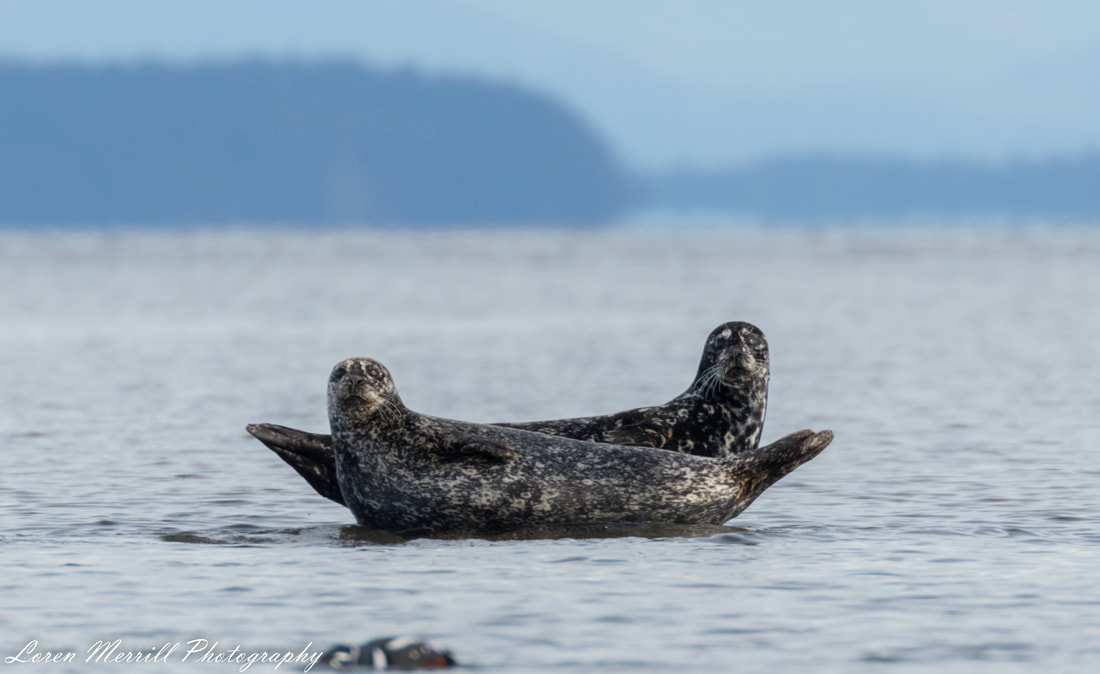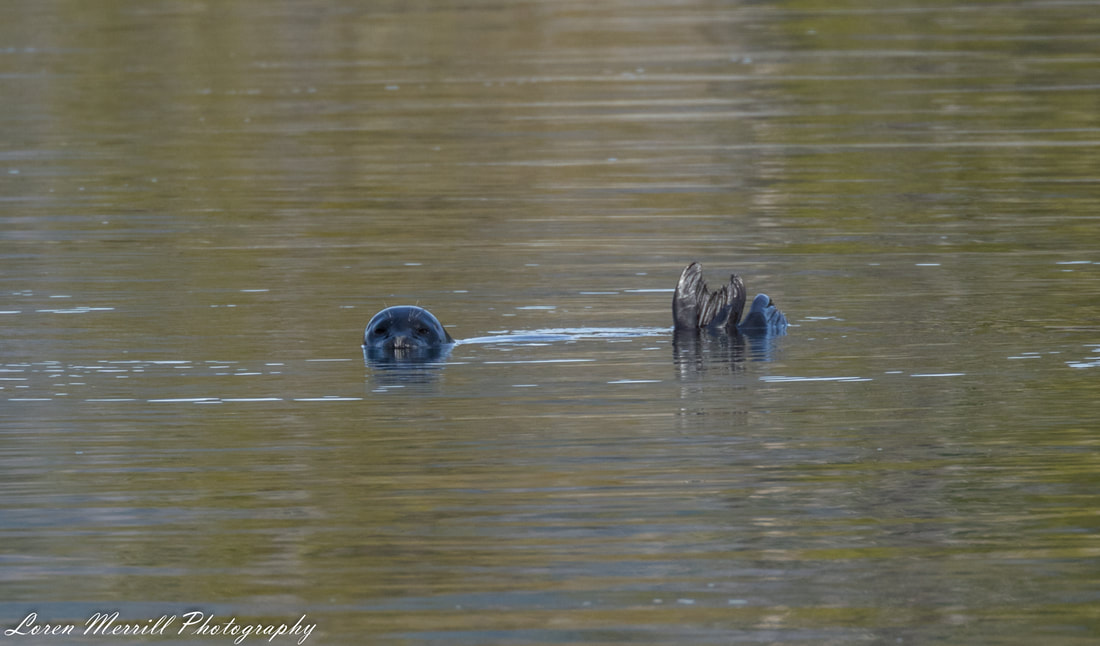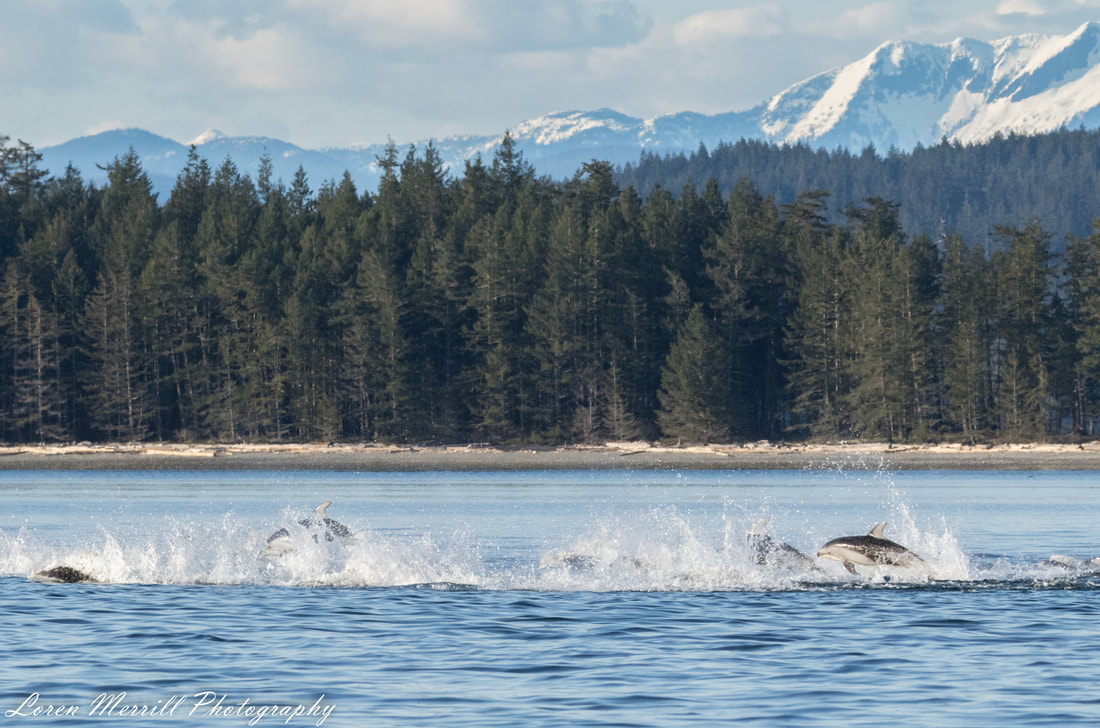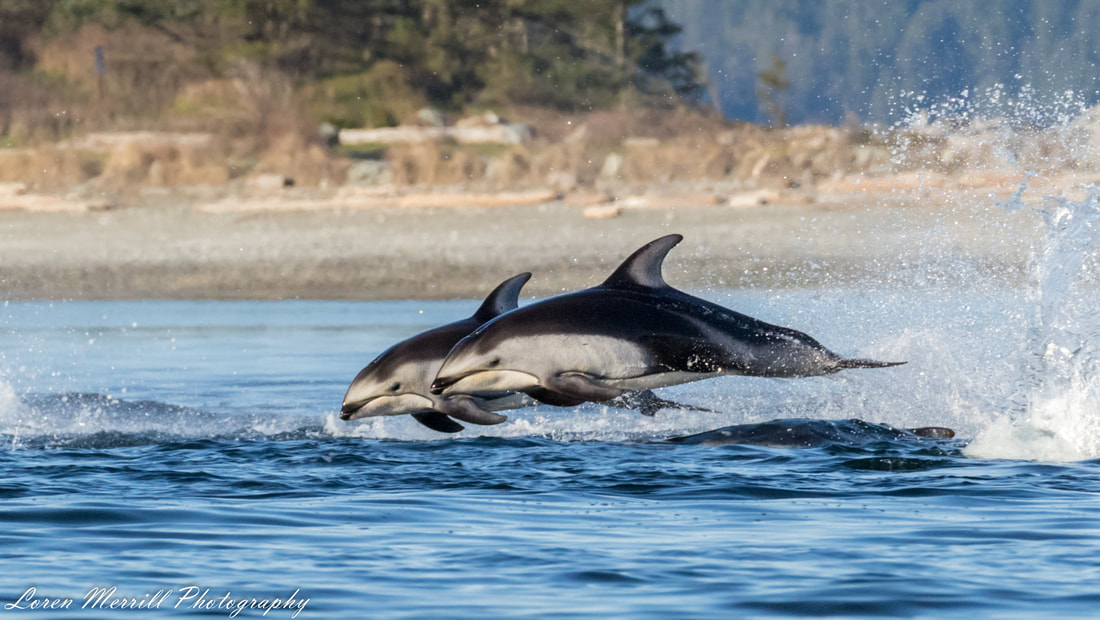|
We are currently living in a land of islands. Or perhaps it should be a sea of islands? Whatever it is, islands dominate our local geography. Of course the defining feature of islands is that they are surrounded by water, and are thus both buffered by, and buffeted by, the forces of the ocean. The warmer winters and cooler summers that temperate islands are renowned for are a product of something called the “maritime effect.” The basic principle of this thermal moderation is that oceans take longer to warm (and cool) compared to the land, and the local climate of areas bordering oceans is similarly tempered. In stark contrast to this moderating effect is the fact that islands can also be subjected to the unfiltered power of an angry ocean. Oceanic storms are capable of unleashing massive amounts of energy onto unprotected islands in the form of waves, wind, and precipitation. In the Pacific Northwest, these factors work in concert to create some of the richest and most productive terrestrial and marine environments on the planet. As a result of this productivity, the waters around Quadra Island are home to a rich diversity of marine mammals; 16 species of cetaceans (whales and dolphins), two sea lions, harbor seals, and if you consider the river otters and coastal wolves that navigate these waters, that’s 21 species (although many of the cetaceans are extremely rare in these waters). I’ll be focusing on four of the marine mammals we’ve encountered in our time here, beginning with the harbor seal. Harbor seals are common in the temperate waters along both coasts of North America, and can be seen hauled out on rocks or swimming close to shore. They are on the small side (for marine mammals) with adults generally reaching 4-6ft in length, although they can top 300 lbs in weight. They are not particularly adept at moving around on land (unlike sea lions, harbor seals cannot use their front limbs for support), but if you’ve ever wondered what a giant sausage bouncing across a beach looks like, these animals do a good impression. Once in the water, however, harbor seals have the grace of a bird in flight. One brisk morning a few weeks back I was fortunate to watch one gliding effortlessly through the water below me as I sat perched on a rock ledge. The seal swam by a few times about 3 meters (~10 ft) below the surface, peering up through the crystal-clear water at me in an attempt to determine if I was a threat or not. I sat motionless on the lichen-covered rock, looking down at the mottled gray and black torpedo as it traveled through its marine world. Sea-stars, urchins, mussels, and neon-green anemones decorated the underwater rock face, but the seal’s attention was fixed on me. Around Quadra, the harbor seals are both curious and wary of humans, and many of our encounters with them include an emphatic warning splash, in which the seal smacks the water to alert other seals in the area that a possible threat is nearby. Their cautious attitude towards humans is well-warranted; seals (and sea lions) are occasionally shot by fisher-people, crabbers, and aquaculture farmers because of undeserved anger over competition and perceived thievery. In spite of this, the local harbor seals seem to be doing well. On Quadra, they are a ubiquitous component of the nearshore waters, and we see one every time we are on the coast. Usually that entails looking out from the shore and seeing their shiny round heads bobbing in the waves as they look around and catch their breath. Near Francisco Point at the southeastern end of the island, we occasionally see them hauled out on exposed rocks at low tide, or lazing about in the calm waters. I’ve seen more than 10 individuals congregating there at once but whether that’s because the point provides good foraging, represents a good meeting place, or is a good lookout for orcas is unclear. It’s entirely possible the point provides all three of these things, which is why it always has multiple seals present. Francisco Point is also a good spot to see the other local pinnipeds—the California and Steller sea lions. A few days ago we wandered down to the point as part of our evening walk, and were treated to a mini marine mammal bonanza (meaning a small sampling of species; not a sampling of tiny species). A large group of harbor seals was cruising close to shore, occasionally engaging in some water-slapping fun, and a river otter was sliding through the water as well, spooking the harlequin ducks and scoters whenever it got too close. The ocean that evening was unusually calm, almost glassy, and we could see and hear the action in and on the water for miles around. We scanned the horizon looking for signs of whales when a splashing commotion erupted more than a hundred meters off the point. We turned towards the splashing and could see the hind flippers of some sea lions disappearing below the water. Almost immediately, dozens of birds began converging on the scene—glaucous-winged and mew gulls, double-crested and pelagic cormorants, red-breasted mergansers, common and Pacific loons, and even a pair of bald eagles. As we scanned the section of sea where the sea lions had been, the water exploded again as a large bull Steller sea lion surfaced and thrashed something back and forth before slipping back underwater. The smaller, darker brown bodies of California sea lions were also visible in the water, but we had no idea what was going on in the water. I looked at some of my photos and Tara’s video and realized that the big bull was thrashing a large fish around (probably a salmon), and that all the birds (and likely the other sea lions) were scrambling to get pieces of the fish that had been flung about. Steller sea lion males can exceed 3 meters (10 ft) in length and weigh over a ton, so a fish that looks large in their mouth is a substantial bit of seafood. The thrashing continued for a few minutes, and gradually the activity in that area died down. The birds left to pursue other food leads, and the sea lions that had congregated around the big bull dispersed. We followed suit and left the point to pursue our own food leads at home. Other than this experience, most of our sea lion encounters consist of watching lone individuals swim by offshore, snorting as they surface and forcefully exhale air through their nose. A few weeks back, however, we did get to witness some of the playful behavior that they are well-known for when we watched a few California sea lions shooting the rapids on the west side of the island. Tara and I had hiked out to Maude Island which is connected to Quadra via a narrow causeway, and from an elevated viewpoint, we could look out across Discovery Passage and over to Vancouver Island. The distance separating the two islands is a relatively narrow span at that point, but it is home to myriad navigational hazards. In fact this stretch of water (called Seymour Narrows) has some of the fastest tidal currents in the world, racing at speeds up to 16 knots. Prior to 1958, there was also a monster of an underwater rock formation called Ripple Rock that was responsible for sinking over 100 vessels. The government blew the top off the rock in 1958 in what is one of the largest non-nuclear explosions in human history to make the passage safer for ships. While it is indeed much safer to navigate now, the narrows are still treacherous for boaters due to the currents and whirlpools. But to a sea lion, those currents present an opportunity for a free water-slide run. From our lookout on Maude Island, Tara and I watched as a few sea lions below us swam slowly against the current. They took advantage of the dead water and eddies close to shore that were created by a small rocky point that protruded from the island into the current. Once they reached that point, they would push out into the current and shoot down the rapids, disappearing underwater. Five or 10 minutes later they would reappear close to shore and do the whole thing over again. The real masters of aquatic play, however, are the dophins, and I’ll wrap up this week’s post with what is probably the highlight of our time on Quadra so far. Two Sundays ago I was driving past Drew Harbor and the entrance to Rebecca Spit after a morning of hiking near Morte Lake, when I noticed a small group of people clustered on the side of the road. I glanced into the harbor to see if there was something in the water drawing the attention of the people and saw activity in the water. I pulled over, grabbed my camera and hurried to the water’s edge. Perhaps 100 meters (~330 ft) from the barnacle studded rocks I was standing on was a pod of 50-75 Pacific white-sided dolphins slowly swimming about in the shallow waters of Drew Harbor. The dolphins would swim in one direction for a while, frequently surfacing with a loud exhalation as they expelled air and water vapor from their blow-hole. Some individuals would change direction, and it would appear as though the pod was swimming in a circle for a little while. This behavior is called “milling” and after watching them mill-about for 30 minutes or so I raced home to get Tara. When we returned, the dolphins were still there, but now they had added another component to their slow meanderings; the sprint. This seemed to happen about every 30-45 minutes during which a signal would go out through the pod and they would all start racing through the water. During these sprints, the dolphins would break the surface with most of their body, but they generally wouldn’t jump out of the water. Sometimes the dolphins would sprint one way for a hundred meters, and then turn and sprint back to where they had been. The sprint would typically go on for a minute or two, after which the dolphins would return to their milling behavior. We watched this amazing show from the shore but sometimes the dolphins would get to within 15-20 meters (45-65ft) of where we stood. Tara ventured home after a few hours but I stayed behind to see if the source of this activity would be revealed. I really wasn’t sure what the dolphins were up to-were they herding schools of fish in the shallows? Were they avoiding a pod of orcas that was on the other side of Rebecca Spit? Neither scenario seemed likely. If they were fishing, where were the gulls, cormorants and other birds that almost always join in the hunt? If they were avoiding orcas why were they making a splashing commotion that would be audible for quite a distance underwater? An hour or two after Tara left, a man and woman who lived on the edge of the harbor came down to chat. They told me that this was only the second time in the 27 years they had lived there that they had seen the dolphins exhibit this behavior. We chatted for a little while longer and then they continued on down the shore a little ways. I continued to take photos of the dolphins when they came close mixing in close-up shots with landscape shots in an attempt to capture the amazing backdrop against which this show was occurring. Suddenly, there was a solitary splash. Then another. In the midst of the milling, a few individuals had begun full body breaches, jumping clear of the water and smacking back down on their sides, backs or bellies. This was clearly a signal, and it spread through the pod immediately. The dolphins exploded into motion as they began the final act to their day-long spectacle. All traveling in the same direction, the dolphins tore through the water, leaping and breaching as they went. They raced around the perimeter of the harbor, passing within 20-30 meters of where I kneeled at the water’s edge, and within a few minutes they had exited the harbor. I stood up and laughed with joy and shock at what I had just witnessed. I had been hoping for an acrobatic display, and I got that and then some. But what had that entire day of activity actually been? Was it related to breeding displays? Was this group-bonding? Was it a day-long choreography session that closed with the actual show? I don’t know—any of those options seem plausible. All I know is that I was lucky enough to be in the right place at the right time to bear witness to an amazing natural event.
Next week’s post: TDB.
0 Comments
Leave a Reply. |
About the author:Loren grew up in the wilds of Boston, Massachusetts, and honed his natural history skills in the urban backyard. He attended Cornell University for his undergraduate degree in Natural Resources, and received his PhD in Ecology from the University of California, Santa Barbara. He has traveled extensively, and in the past few years has developed an affliction for wildlife photography. Archives:
|
